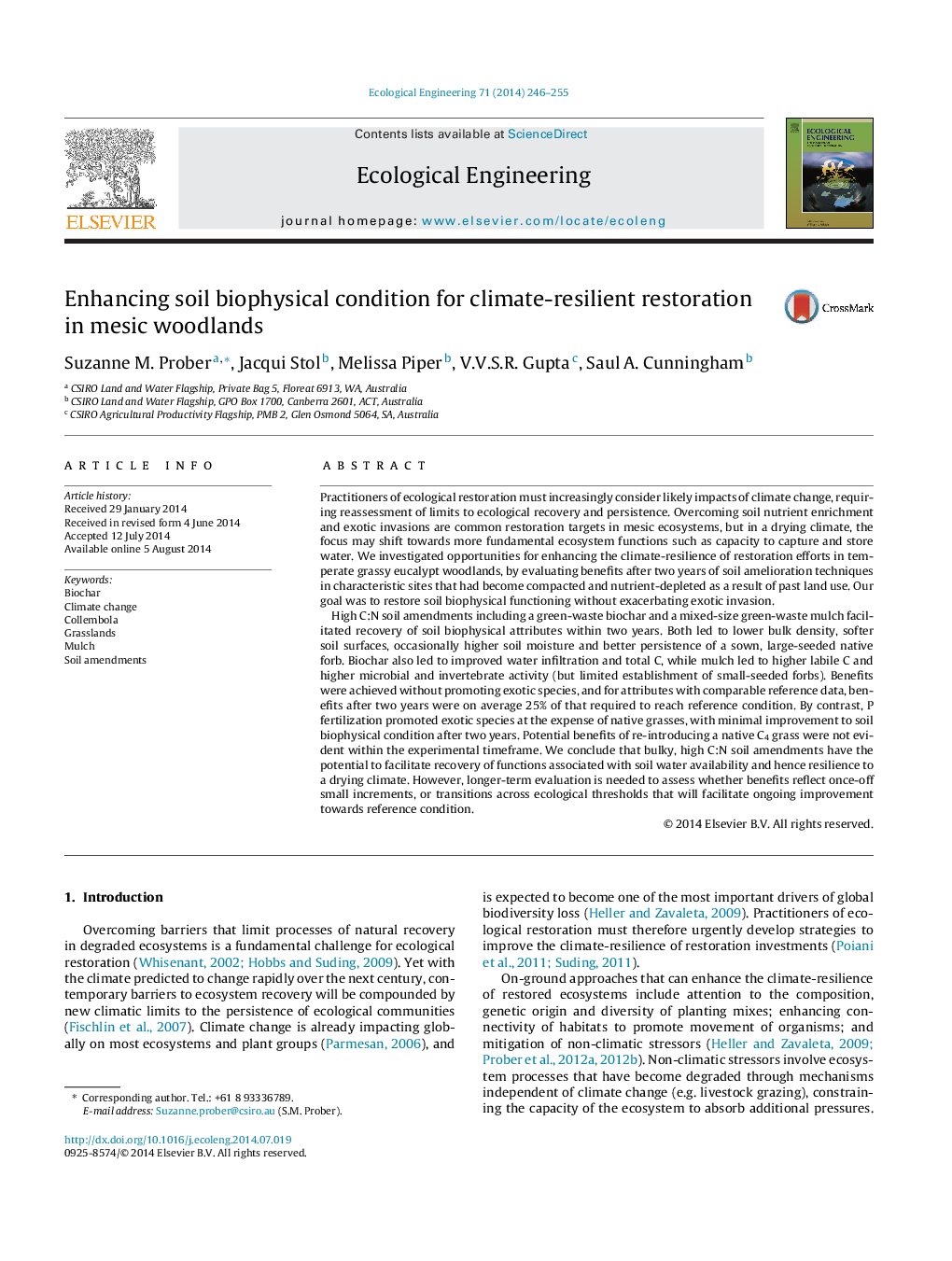| Article ID | Journal | Published Year | Pages | File Type |
|---|---|---|---|---|
| 4389160 | Ecological Engineering | 2014 | 10 Pages |
Abstract
High C:N soil amendments including a green-waste biochar and a mixed-size green-waste mulch facilitated recovery of soil biophysical attributes within two years. Both led to lower bulk density, softer soil surfaces, occasionally higher soil moisture and better persistence of a sown, large-seeded native forb. Biochar also led to improved water infiltration and total C, while mulch led to higher labile C and higher microbial and invertebrate activity (but limited establishment of small-seeded forbs). Benefits were achieved without promoting exotic species, and for attributes with comparable reference data, benefits after two years were on average 25% of that required to reach reference condition. By contrast, P fertilization promoted exotic species at the expense of native grasses, with minimal improvement to soil biophysical condition after two years. Potential benefits of re-introducing a native C4 grass were not evident within the experimental timeframe. We conclude that bulky, high C:N soil amendments have the potential to facilitate recovery of functions associated with soil water availability and hence resilience to a drying climate. However, longer-term evaluation is needed to assess whether benefits reflect once-off small increments, or transitions across ecological thresholds that will facilitate ongoing improvement towards reference condition.
Related Topics
Life Sciences
Agricultural and Biological Sciences
Ecology, Evolution, Behavior and Systematics
Authors
Suzanne M. Prober, Jacqui Stol, Melissa Piper, V.V.S.R. Gupta, Saul A. Cunningham,
